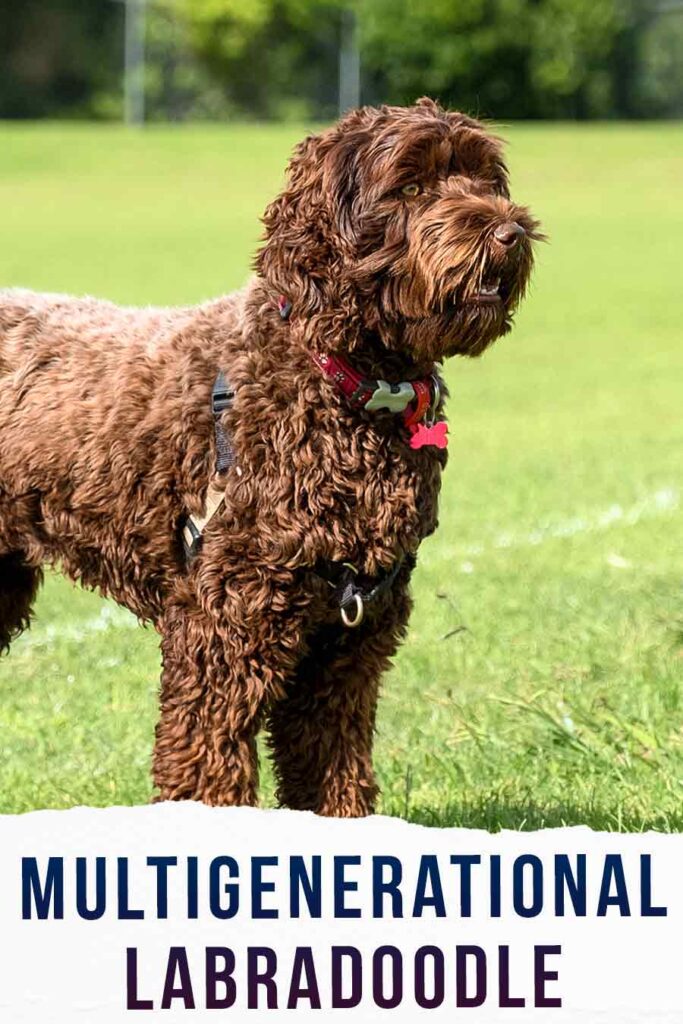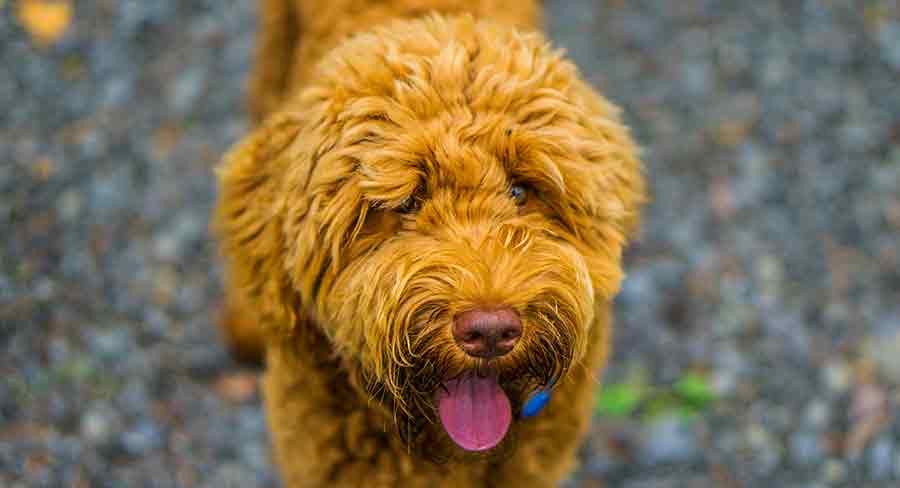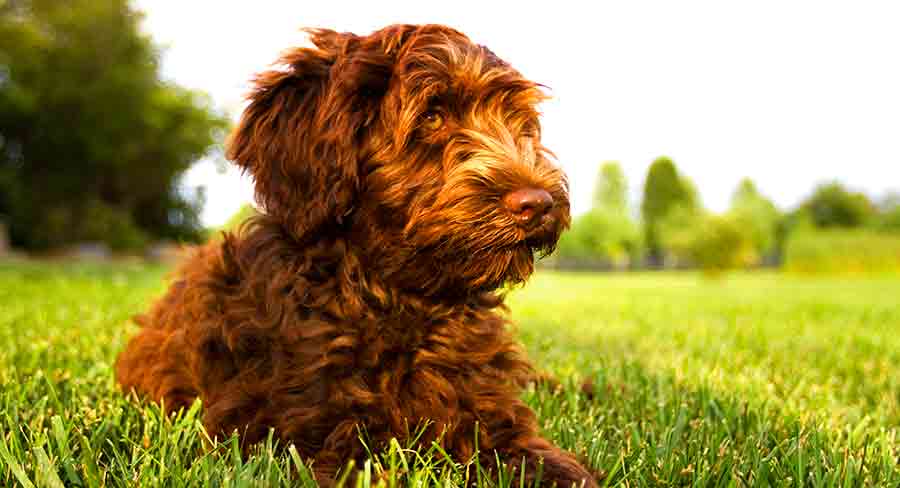In this article we take a look at what the term multigenerational Labradoodle means, and what you need to know if you see multigenerational Labradoodle puppies for sale.
A multigen Labradoodle is usually at least three generations removed from their closest purebred Labrador or Poodle ancestor. When breeders talk about multigen Labradoodles, they might also use confusing terms like 1st generation Labradoodle, and F2b Labradoodle. But once you understand the simple rules of labelling doodle generations, they are a useful source of information!
What Is A Multigenerational Labradoodle?
Breeders usually use the term multigenerational Labradoodle (or multigen Labradoodle) to describe an F3 Labradoodle or beyond. Or in other words, a puppy whose closest purebred ancestor is a great grandparent or further.
Describing Labradoodle generations
By itself, the term ‘F3 Labradoodle’ doesn’t make any more sense than ‘multigenerational Labradoodle’. To throw some more light on the matter, here’s a quick primer on how Labradoodle generations are counted:
- F1 Labradoodles have one purebred Labrador parent, and one purebred Poodle parent. The F stands for ‘filial’, a term to describe the relationship between parents and their offspring. An F1 Labradoodle puppy can also also be described as a 1st generation Labradoodle.
- F2 Labradoodles have two F1 Labradoodle parents. Their closest purebred ancestors are their grandparents, and they are two generations removed from them. Therefore, an F2 Labradoodle is also sometimes called a 2nd generation Labradoodle.
- F1b Labradoodles have one F1 Labradoodle parent, and the other parent is either a pedigree Labrador or pedigree Poodle. More usually it is a Poodle, to increase the odds of each F1b puppy having a non-shedding coat. The b stands for ‘back cross’.
- Back crossing can be performed on later generations too. For example, an F2b Labradoodle is the result of mating an F2 Labradoodle with either a Labrador, a Poodle, or an F1 Labradoodle.
- An F3 Labradoodle is three generations removed from their closest purebred ancestor. Or in other words, their closest pedigree Labrador or Poodle relative is a great-grandparent. From this point onwards, keeping track of a puppy’s family tree starts to get cumbersome. Which is why most breeders switch to describing litters as multigenerational instead!

Why Does Being A Multigen Labradoodle Matter?
If you’ve seen multigenerational Labradoodles for sale, then you don’t just need to know what it means, you need to know why it matters! Why don’t breeders just produce every Labradoodle litter from a Lab and a Poodle anyway? Well, the reason is all to do with fixing desirable genetic traits in the next litter. And for many breeders, an important example of this is coat type.
Does a multigen Labrdoodle shed?
Labradors have heavy shedding coats, whilst Poodle coats shed very little. F1 Labradoodles can inherit either coat type, but creating multigen litters from proven non-shedding Labradoodle lines increases the odds of puppies with non-shedding coats. However, it’s impossible to guarantee that a multigen Labradoodle won’t shed – shedding can skip a generation, or even several!
Multigen Labradoodle temperament
Multigen Labradoodles can also be more reliable in other respects. 1st generation Labradoodles can have very variable temperaments – there’s no guarantee that they’ll only inherit the ‘best’ qualities of each breed. But using the friendliest F1 Labradoodles to create an F2 generation, and using the friendliest individuals from that generation to create an F3 generation, increases the odds of multigen Labradoodles also being exceptionally friendly.
What About Multigenerational Mini Labradoodles?
The first Labradoodles were a Labrador and Standard Poodle mix. They varied in size from 40 to 80 pounds. Since then, interest in Labradoodles with a Miniature Poodle parent has also increased. Miniature Poodles weigh just 10 to 15 pounds, which means the potential range of adult sizes in a litter of F1 Mini Labradoodle puppies is wide. Creating a litter of F1b Mini Labradoodle puppies with one Mini Labradoodle parent and one Mini Poodle parent increases the likelihood of small, non-shedding puppies. And producing multigenerational Mini Labradoodles after that will further decrease the likelihood of puppies over a certain size in each litter.
Questions To Ask A Multigenerational Labradoodle Puppy Breeder
Whatever size of multigen Labradoodle you’re considering, it’s important to choose the right breeder.
Health testing isn’t just for pedigree dogs!
Labradors and Poodles are both prone to some genetic health problems, and in particular hereditary orthopedic diseases such as hip and elbow dysplasia. All Labradors and Poodles used for breeding should first be tested and cleared for:
- hip dysplasia
- elbow dysplasia
- eye disease
- and the faulty gene that causes exercise induced collapse.
It’s equally important that Labradoodles used to produce multigenerational Labradoodle puppies are also tested for the same conditions. So, always ask your breeder for proof of the results of these tests.
Producing perfect personalities
Another important question for multigen Labradoodle breeders is ‘why those parents?’ Why did they pick that sire and dam for that litter? What is it about each of them that they were so keen to capture in another generation?
These questions are particularly important for multigen Labradoodles because in a sense, there is no right or wrong answer. One person’s ideal Labradoodle personality might be laidback and cuddly. Whilst another person might be seeking an energetic dog they can go running with or train as a gundog. The breeder is likely to have picked parents who match their idea of the best Labradoodle temperament. You need to find out if your idea of perfection is the same!
Types of Labradoodles
There are lots of ways of categorizing Labradoodles, but a really interesting one that is relevant here is designer Labradoodles vs Australian Labradoodles. Designer Labradoodles the most famous example of a wider trend for ‘designer dogs’ – dogs with purebred parents or grandparents from two different pedigrees. Multigen Labradoodles also fall into this category, albeit somewhere on the fringes of it.
Australian Labradoodles, on the other hand, are more than just an Australian Labrador Poodle cross. Australian Labradoodle is the breed name adopted by Labradoodle enthusiasts who are trying to get the Labradoodle recognized as a new pedigree dog in its own right. To achieve this, they need to breed true. That is, each new generation of puppies should come from the previous generation of Australian Labradoodles, with no more outcrossing to purebred Labradors and Poodles. And all the puppies should match the same physical profile and behave in a reliably similar way.
Technically by that standard, all Australian Labradoodles are also multigen Labradoodles, which is why you might sometimes come across an advert for a ‘multigenerational Australian Labradoodle puppy’ for sale. But, it’s important to note that a multigenerational Labradoodle doesn’t automatically become an Australian Labradoodle – the Aussie Labradoodle breeding programme is more sophisticated than that!

Multigenerational Labradoodle Summary
Multigen Labradoodles are at least three generations apart from their closest pedigree Lab or Poodle relative. Breeding multigen Labradoodles is an opportunity to create litters with less variable qualities than F1 Labradoodles. But it’s important to make sure your expectations match the breeder’s intentions!
Do you already have a multigen Labradoodle? We’d love to hear about them! Please use the comments box to introduce us!
Don’t miss!
For more information on Labradoodle generations and the different types of Labradoodles, don’t miss these articles:
- F1 Labradoodle – Understanding Breed Generations
- F2 Labradoodle – What Does It Mean?
- F1b Labradoodle – What Does It Mean?
- Australian Vs American Labradoodle
- My Labradoodle Puppy Has Straight Hair
- Labradoodle Wool Coat
- Wirehaired Labradoodle Puppy
References
Ali. Genetic analysis of the modern Australian labradoodle dog breed reveals an excess of the poodle genome. PloS Genetics. 2020.
Breur et al. Genetics of Canine Hip Dysplasia and Other Orthopaedic Traits. The Genetics of the Dog. 2001.
McGreevy et al. Labrador retrievers under primary veterinary care in the UK: demography, mortality and disorders. Canine Genetics & Epidemiology. 2018.

